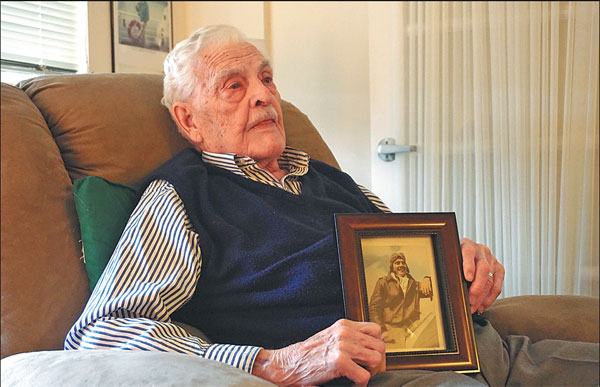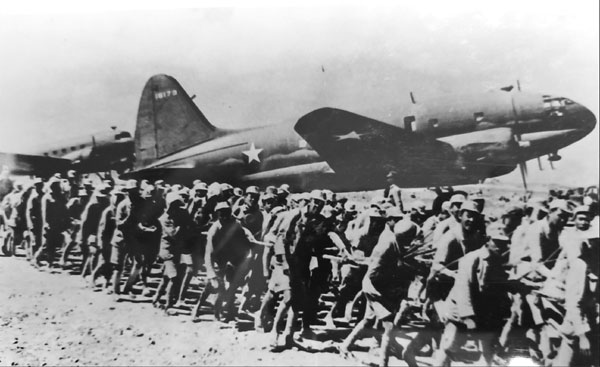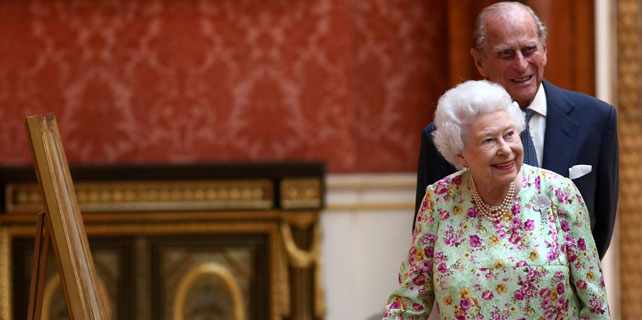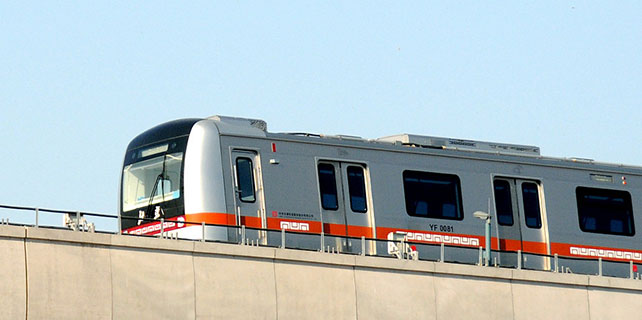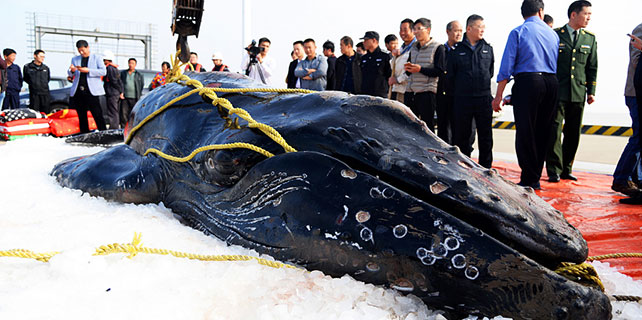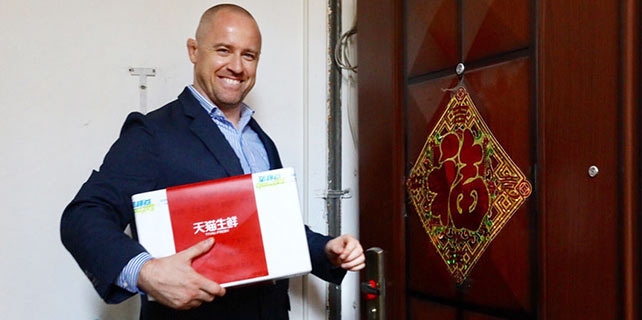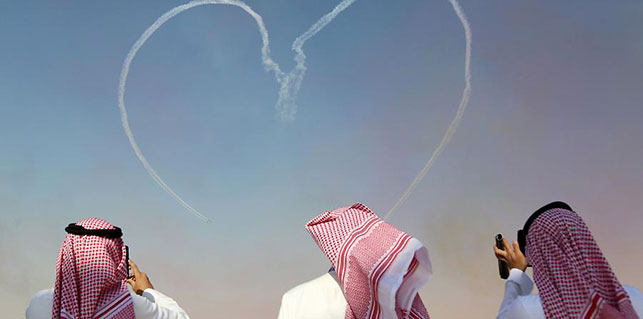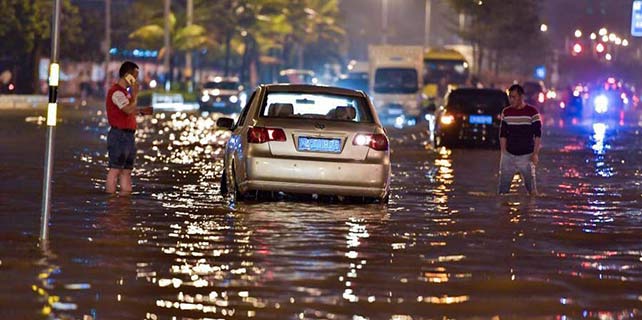Himalayan task
Richard Daniel Harris, a WWII veteran, recalls the time when he flew with supplies for Chinese and US troops. Linda Deng and Zhang Yuan report from Seattle
At Richard Daniel Harris' apartment in West Seattle in the United States, the 96-year-old former pilot describes his joy at hearing about Japan's surrender in World War II while he was in midair, at about 16,000 feet.
When you open his logbook and see the details of the treacherous trips he made over "the hump," or the Himalayas, you realize how adventurous his life has been.
|
Richard Daniel Harris holds a photo of himself, taken in 1942, at his apartment in West Seattle during an interview with China Daily. Zhang Yuan / China Daily |
Between February and October 1945, Harris flew military transport aircraft from India to China in support of the allied war effort against Japan.
The US Army Air Force's Air Transport Command pilots, such as Harris, flew from bases in India's northeastern Assam state to Kunming in China's southwestern province of Yunnan - a trip of about 500 miles - which helped Chinese and American troops after Japan took control of Burma (now Myanmar) and its land routes during WWII.
"When Pearl Harbor happened, there was a call to arms," Harris says. "When we were invaded by a foreign country; when they were at the table, trying to negotiate peace, they attacked and bombed our ships in Honolulu."
Harris volunteered to join the US Army. He served from July 3, 1942, to March 18, 1946, going in as a private and being discharged as a flight officer.
"I didn't expect to go in. ... I had a friend who was interested in it. I had a car and I drove him down. We both went in and took the physical (exam). He didn't pass (but) I did," Harris recalls.
When Harris flew solo for the first time during military training in Lewiston, Idaho, he considered himself a real pilot.
And later, when he flew back and forth over the Himalayas, the Japanese planes trailing them left the US planes alone, because of the mountains, he says.
"The conditions were too bad for the Japanese bombers to fight. If they did anything, they dropped bombs on the runways we were going to use in China. So we could not land, and we would have to throw our loads out because we could not make it back over the higher altitude," Harris says.
But the task was very risky because the round trip meant heavy winds, subzero temperatures, thunderstorms and mountain peaks rising up to 18,000 feet.
The pilots had no choice but to navigate the obstacles in overloaded C-46 aircraft built specially for the task. They nicknamed the C-46 "flying coffin" because of the high casualty rates, "probably one in four, and some never came home".
"We had to use oxygen masks all the time because of the pressure," he says.
"We used them at night from the time we took off to the time we landed. In the daytime, we wouldn't put them on until we got to over 10,000 feet.
"You'd listen for a signal on the radio, but in bad weather you couldn't hear the signal. So you had to rely on what they called a gyrocompass."
Despite the harsh conditions, Harris himself went over and back 72 times, he says.
"We would load our gas tank full and not refuel on the other side and come back. It was important to carry as much as we could and still take off in India," Harris says.
"We carried tons of materials, like bombs, gasoline, ammunition, food, medical supplies, but mainly gasoline and bombs."
The "hump pilots" transported 650,000 tons of material to China at great cost - both in terms of people and aircraft - over 42 months during the last phase of the war.
"I was 21 years old. You don't have any fear when you are 21," Harris says.
There were all kinds of life-threatening moments. Once he blew a tire when he was fully loaded with pipes for building a gasoline pipeline to China.
He flew mostly by compass and landed using calculations based on flying time. Harris, a Catholic, carried rosary beads with him on every trip.
Sometimes, he flew Chinese troops as well.
"They just sat on the floor (of the aircraft) and they had no oxygen masks. We got up to altitudes of 10,000 feet. The conversation in the back just sort of stopped. A lot of them went to sleep," Harris says.
"It was not a pleasant journey for them."
He was a member of the The Hump Pilot Association, which held its first meeting in 1947. After nearly 60 years of activities, the association's board of directors voted on Sept 28, 2005, in Nashville, Tennessee, to dissolve the body at the end of that year due to the advancing age of its members.
In April, Harris flew to Washington, DC, with the Honor Flight program and attended WWII memorials.
When the war was over, Harris flew from the eastern Indian city of Kolkata to Shanghai in eastern China, which he said was quite an experience.
Discharged from the Army, Harris studied law and became a lawyer and served as an assistant US attorney in Seattle.
He was a special deputy prosecutor for the county and subsequently served as a judge for three years in Seattle Municipal Court. He practiced law for 52 years.
His son Tracy Harris says his father seldom speaks of his war experiences, as is typical of his generation.
Harris says, "Thanks to the Lord, I have (had) 73 years and more of a good marriage, wonderful children - two sons and three daughters."
Today, he can still drive his car. "But I am not sure if I can fly an airplane again," he says.
Contact the writers through lindadeng@chinadailyusa.com.cn
|
An airfield in Kunming, in China's southwestern province of Yunnan, used during World War II. Provided to China Daily |
(China Daily Africa Weekly 03/23/2018 page19)



